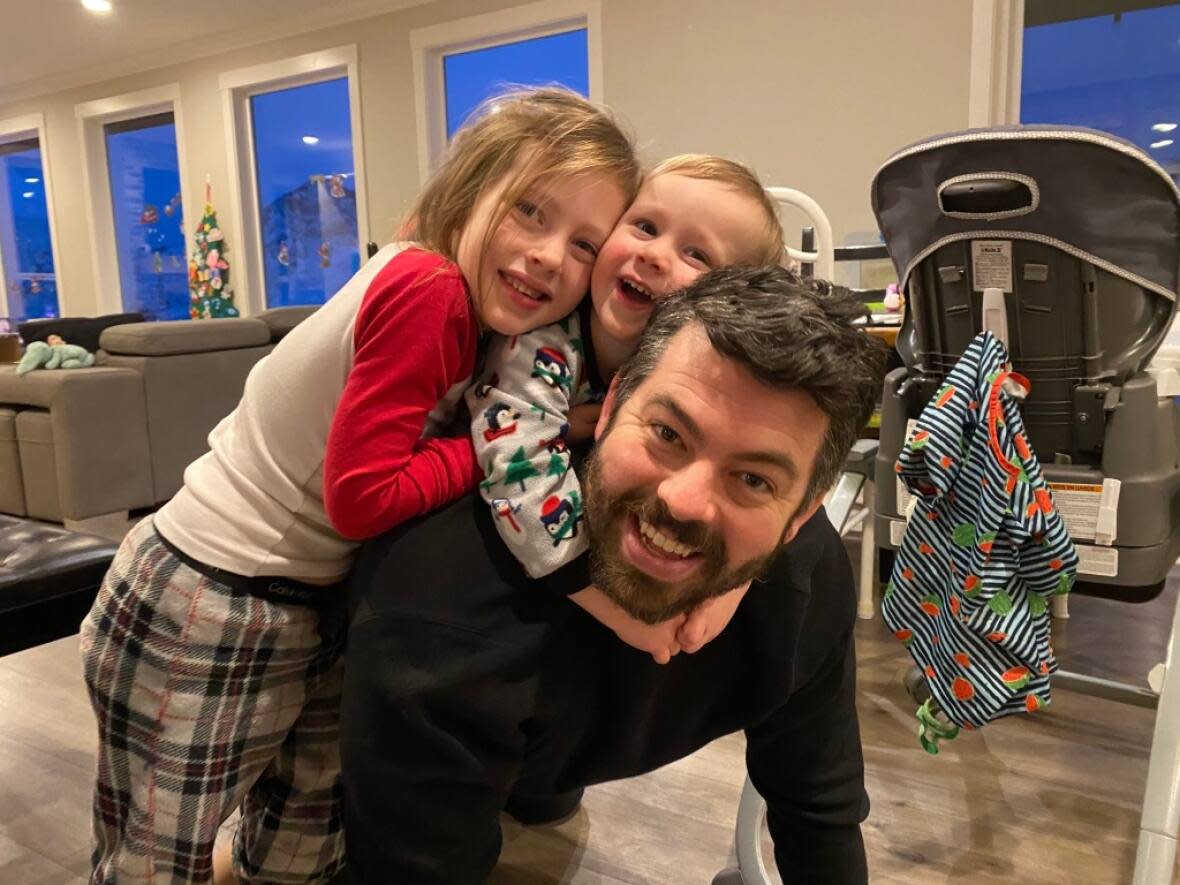Community mourns loss of Kamloops radiologist who died 7 weeks after bike crash

The medical community in Kamloops is grieving the death of a local cyclist and radiologist.
Andrew van der Westhuizen, 36, died Thursday following a crash in the city on May 11. He was cycling on a divided multi-use pathway when he collided with a commercial vehicle turning across the path.
After being airlifted to Vancouver for surgery, he succumbed to his injuries on June 30.
His wife, two children and many colleagues are reeling from the loss of the former radiologist whose death is having a community-wide impact.
Broader loss for the community
B.C.'s health-care system has been dealing with staffing shortages that have led to closures and cancellations across the province.
Dr. Vedd Vipal, the department head of medical imaging at Royal Inland Hospital, worked closely with Andrew.
He says losing a physician, especially a specialist, is a "tremendous loss" for the community and managing in an already strapped health-care situation will be a struggle.
"We'll be able to push through. It's going to be hard. It'll be challenging."

Stephanie Hintz, an ultrasound technologist, said Andrew was a huge asset to the team and will be greatly missed,not only by the staff he worked with, but by his patients.
"He was one of the few doctors I've ever worked with that really connected with the patients … he was always able to show that he cared."
Grateful for the time together
Andrew's wife, Jen van der Westhuizen, said during the seven weeks he was in hospital in Vancouver, the couple would communicate primarily via video chat and through hand motions and facial expressions.
"He would blow … kisses and 'I'd say, is your mouth sore?' And he'd shake his head, and I'd say, 'Are you giving me kisses?' And he'd say, 'Yes,' through nodding."
She said her husband would ask through gestures about the kind of care he was receiving and how his children were doing.
"He had a lot of trauma that we were very hopeful that he would be able to push through, and if anybody could do it, it was him."
Despite his good health going into the hospital, repeated surgeries and complications associated with being in long-term critical care took their toll.
"All the little bits in between the infections, the wasting away, nutrient depletion, all of the secondaries combined with, obviously, the original trauma … it was just too much."

In the lead-up to Andrew's death, Jen said she had a series of conversations with their six-year-old daughter — explaining first that he was working to come home to them and later that it didn't look like he was going to be able to do that.
"We had a huge cry."
Jen said she is just trying to surround her children with love and openness. They have been spending time with extended family to get additional support through the last seven weeks.
'Gentle Giant'
Beyond his professional life, Andrew had made himself a key part of the neighbourhood where he lived.
Neighbour Brittany Robinson said in the year the van der Westhuizens lived in Kamloops, they were able to establish a close friendship.
"Gentle Giant is the perfect description of him, " she said.
"He was new to Juniper, but he will not be forgotten up there ... His presence is going to be lasting for a long, long, long time."
Jen said she has been overwhelmed with the comments and support from his colleagues and friends following his death.
"I loved him for him, and I knew he was an amazing person, but hearing just small words of encouragement that he would offer somebody… his absence is really being felt in a lot of places."
Her posts on social media have hundreds of comments offering support and expressing loss.
In June, RCMP found that speed was a primary factor in the accident.

 Yahoo Movies
Yahoo Movies 
